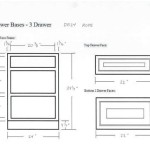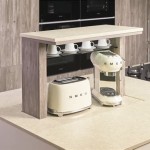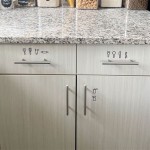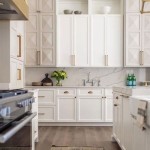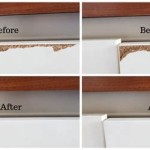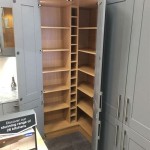Can You Cover Kitchen Cabinets With Contact Paper? A Detailed Exploration
The question of whether one can cover kitchen cabinets with contact paper is a common one, particularly among individuals seeking budget-friendly and aesthetically adaptable ways to update their kitchen’s appearance. Contact paper, a self-adhesive decorative covering, offers a relatively simple and inexpensive alternative to more extensive and costly renovations like painting or refacing. However, the suitability and longevity of contact paper as a cabinet covering depend on a variety of factors, including the quality of the contact paper chosen, the preparation of the cabinet surface, the application technique employed, and the overall environment of the kitchen. This article will explore these factors in detail, providing a comprehensive understanding of the potential benefits and drawbacks of using contact paper on kitchen cabinets.
Contact paper, in its essence, is a thin, flexible material typically made of vinyl or paper with an adhesive backing. It comes in a wide range of colors, patterns, and textures, mimicking everything from solid colors and wood grains to more elaborate designs and even metallic finishes. This versatility makes it an appealing option for those looking to personalize their kitchen cabinets without committing to permanent changes. The accessibility and ease of application further contribute to its popularity, as it often requires minimal tools and experience compared to other renovation methods.
However, the inherent properties of contact paper also present certain limitations. Its thinness means it may not effectively conceal underlying imperfections on the cabinet surface, and its adhesive may not be strong enough to withstand prolonged exposure to heat, humidity, or frequent cleaning. Therefore, a careful assessment of the existing cabinets and the overall kitchen environment is crucial before deciding to use contact paper.
Understanding the Benefits of Using Contact Paper
One of the primary appeals of using contact paper on kitchen cabinets is its cost-effectiveness. Compared to painting, refacing, or replacing cabinets, contact paper is a significantly cheaper option. Replacing an entire set of kitchen cabinets can easily run into thousands of dollars, while professional refacing, which involves replacing cabinet doors and drawer fronts, can also be a substantial investment. Painting, while less expensive than these options, still requires the purchase of paint, primer, brushes, rollers, and other supplies, as well as a considerable amount of time and effort. Contact paper, on the other hand, can be purchased for a fraction of the cost of these alternatives, making it an accessible option for those on a tight budget.
Another significant advantage of contact paper is its ease of application. Unlike painting, which requires meticulous surface preparation, sanding, priming, and multiple coats of paint, applying contact paper is a relatively straightforward process. With a few basic tools, such as a measuring tape, scissors or a utility knife, a smoother or squeegee, and a clean cloth, individuals can typically cover their cabinets themselves without requiring professional assistance. This DIY aspect not only saves money on labor costs but also allows for a greater degree of control over the final result.
Furthermore, contact paper offers a high degree of design flexibility. The wide array of colors, patterns, and textures available allows for customization that can be tailored to individual preferences and kitchen styles. Whether one desires a sleek, modern look with solid-colored contact paper or a rustic, farmhouse aesthetic with wood-grain contact paper, the options are virtually limitless. This versatility makes it easy to update the look of kitchen cabinets to reflect current trends or personal taste without the commitment of permanent alterations.
Assessing the Drawbacks and Limitations
Despite its advantages, contact paper also presents certain drawbacks that must be considered. One of the most significant limitations is its durability. Contact paper is generally not as durable as paint or other more permanent finishes. It is susceptible to tearing, scratching, and peeling, especially in high-traffic areas or areas prone to moisture exposure. The adhesive may weaken over time, causing the contact paper to lift or bubble, particularly around edges and corners. Therefore, the longevity of contact paper as a cabinet covering may be limited, requiring periodic replacement or repairs.
Another potential issue is the difficulty of removing contact paper. While it is designed to be removable, the adhesive can sometimes leave behind a sticky residue that is difficult to clean. In some cases, removing contact paper can even damage the underlying cabinet surface, especially if the cabinets have a delicate finish or are made of porous materials. Careful removal techniques and the use of appropriate cleaning solvents may be necessary to minimize the risk of damage.
Furthermore, the appearance of contact paper may not always be as high-quality as more permanent finishes. Its thinness can make it difficult to achieve a perfectly smooth and seamless look, especially on cabinets with textured surfaces or intricate details. The edges of the contact paper may be visible, and imperfections in the application can be more noticeable than with other finishes. While careful application can minimize these issues, it is important to acknowledge that contact paper may not always provide the same level of aesthetic refinement as professionally painted or refaced cabinets.
Preparation and Application Techniques for Optimal Results
To maximize the potential benefits of using contact paper on kitchen cabinets and minimize the drawbacks, careful preparation and proper application techniques are essential. The first step is to thoroughly clean the cabinet surfaces to remove any dirt, grease, or grime. This can be done with a mild detergent and water, followed by a thorough rinsing and drying. Any existing damage, such as scratches or dents, should be repaired before applying the contact paper. Minor imperfections can be filled with wood filler or spackle and then sanded smooth. For cabinets with a glossy finish, it may be necessary to lightly sand the surface to provide a better adhesive bond.
Once the cabinets are clean and prepared, the contact paper should be carefully measured and cut to size. It is important to leave a slight extra allowance around the edges to allow for trimming. When applying the contact paper, it is best to start at one edge and gradually peel away the backing paper, smoothing the contact paper onto the cabinet surface as one proceeds. A smoother or squeegee can be used to eliminate air bubbles and ensure a smooth, even application. It is important to work slowly and carefully, smoothing out any wrinkles or creases as they appear.
Particular attention should be paid to the edges and corners of the cabinets. These areas are prone to lifting and peeling, so it is important to ensure that the contact paper is securely adhered. Overlapping edges can be trimmed with a utility knife to create a clean, seamless look. For cabinets with recessed panels or other intricate details, it may be necessary to use a heat gun or hairdryer to soften the contact paper and make it more pliable. This allows it to conform to the contours of the cabinet surface more easily.
After the contact paper has been applied, it is important to allow it to cure for several hours or even overnight before putting the cabinets back into use. This allows the adhesive to fully bond to the cabinet surface and minimizes the risk of lifting or peeling. Regular cleaning and maintenance are also essential to prolong the life of the contact paper. Use a damp cloth to wipe down the cabinets as needed, and avoid using harsh chemicals or abrasive cleaners, which can damage the surface of the contact paper.
In summary, covering kitchen cabinets with contact paper can be a viable option for those seeking a cost-effective and aesthetically versatile way to update their kitchen’s appearance. However, it is important to carefully consider the potential drawbacks and limitations, and to follow proper preparation and application techniques to maximize the chances of success. By doing so, individuals can achieve a refreshed and personalized look for their kitchen cabinets without breaking the bank. This article offers a comprehensive guide to navigate the process and make informed decisions about using contact paper in the kitchen.

How To Update Cabinets Using Contact Paper Al Kitchen Makeover Cover

How To Make Over A Kitchen With Contact Paper Covering Cabinets Countertops And Appliances

Re Wrapping Kitchen Cabinets With Contact Paper Er Friendly

Diy Kitchen Cabinet Makeover With Only Contact Paper Al Friendly

Spruce Up The Outside Of Your Kitchen Cabinets With Contact Paper Offbeat Home Life

When Your Landlord Says Paint Is Out Of The Question Try Contact Paper For Cabinets Domino

How To Make Over A Kitchen With Contact Paper Covering Cabinets Countertops And Appliances

Diy Contact Paper Kitchen Counters The Interior Diyer

How To Update Cabinets With Contact Paper The Handyman S Daughter

Contact Paper In The Kitchen 5 Places
Related Posts

